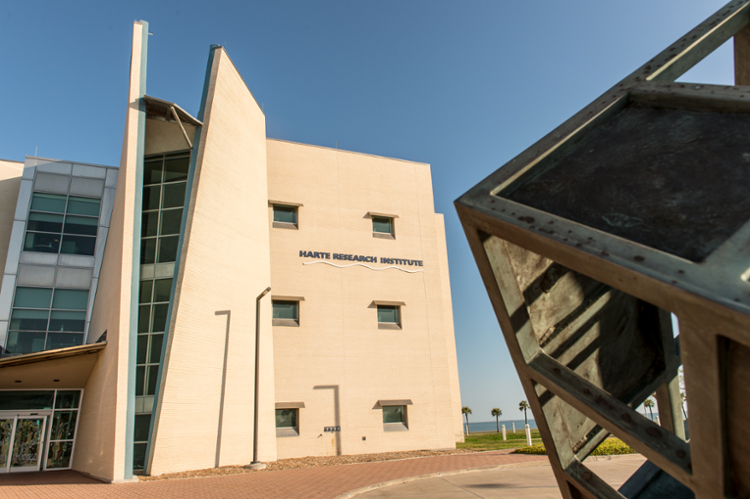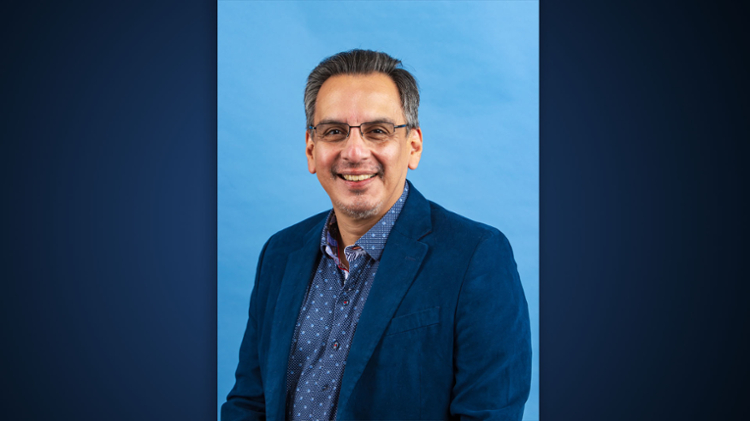HRI and TAMU-CC Researchers Assist in Coral Disease Response and Long-Term Monitoring at Flower Garden Banks National Marine Sanctuary
CORPUS CHRISTI, Texas – Scientists from the Harte Research Institute for Gulf of Mexico Studies (HRI) at Texas A&M University-Corpus Christi (TAMU-CC) are among research staff responding to a recently documented disease outbreak at the Flower Garden Banks National Marine Sanctuary (FGBNMS). The response effort is being led by National Oceanic and Atmospheric Administration (NOAA) staff. Additional researchers include staff from the Texas State Aquarium and Louisiana’s Audubon Nature Institute.
Initial documentation revealed symptoms like those seen in Stony Coral Tissue Loss Disease (SCTLD). The disease destroys the soft tissue of reef-building coral, can spread rapidly, and has a high mortality rate. Symptoms were first observed during a monitoring cruise that took place from Aug. 30-Sept. 2 aboard the RV Manta. Flower Garden Banks National Marine Sanctuary and National Coral Reef Monitoring Program divers observed brain and star corals at East and West Flower Garden Banks that appeared to show SCTLD-like symptoms, including lesions and tissue loss.
Suspecting that the observed lesions may be SCTLD, a rapid response and intervention cruise was initiated with support from the National Marine Sanctuary Foundation. HRI Assistant Research Scientist Dr. Terry Palmer and TAMU-CC Professor and new HRI Fellow Dr. Keisha Bahr were part of the response effort.
“The Flower Garden Banks is a secluded coral garden, a coral biologists dream, in the Gulf of Mexico,” said Bahr, who specializes in coral reef ecology. “Seeing the SCTLD-like symptoms on these reefs was completely heart-wrenching because these coral reefs are among the healthiest in the Gulf and the Caribbean. While we aren’t certain that the disease is SCTLD, we do know that there is a need to prioritize our efforts to understand the coral disease dynamics that are unfolding on these reefs.”
Nothing resembling this disease had been found at FGBNMS until now. This may be due in part to the isolated location of FGBNMS in the Gulf of Mexico. Divers can find a list of guidelines on how they can help in preventing the spread of SCTLD on NOAA’s website.
Researchers collected additional images of the corals, collected tissue samples, and treated more than 120 coral colonies with an antibacterial paste. Additionally, small coral colonies from species that are often susceptible to SCTLD were collected for future restoration and broodstock efforts and are housed at Moody Gardens in Galveston. Long-term monitoring tasks of FGBNMS were also completed as part of the cruise which included fish surveys, taking photographs at both the East and West Flower Garden Banks, among other tasks.
Dive operations at FGBNMS are often very complicated and are completed by only highly skilled and seasoned divers.
“The shallowest depth we dive is around 70 feet,” Bahr said. “These depths require specialized SCUBA training. Fortunately, our university provides such training, and that has allowed us to dive and work alongside NOAA divers. Not too many universities offer such an opportunity.”
Prior to the most recent long-term monitoring and SCTLD response cruise, Bahr, as well as HRI Research Specialist, Jason Williams, joined NOAA’s National Coral Reef Monitoring Program that will assist with future long-term monitoring tasks in FGBNMS. The rare opportunity will allow them to work alongside governmental researchers, including those from the Environmental Protection Agency, National Park Service, and NOAA.
“This program allows us to understand how healthy our coral reefs are,” Bahr said. “NOAA implements standardized methods that are used in the Caribbean, in the Gulf of Mexico, and in the Pacific – all the coral reefs that are associated with the United States.”
Bahr has been working alongside NOAA to implement the monitoring methods most frequently used by resource managers into her coursework at TAMU-CC. Learning these methods provides students with even more marketable skills following their degree.
HRI is proud to be working alongside multiple agencies and institutions in the response to the coral disease detection and the long-term monitoring efforts at FGBNMS.
“It’s amazing to see so many different agencies – governmental, academic, private, and non-profits – come together to protect this extremely unique coral reef,” Bahr said. “This allows us to pull our resources together to invest in our marine resources and make sure these coral reefs are there for future generations.”
More information about the coral disease response effort in FGBNMS can be found in a recent press release issued by NOAA.












